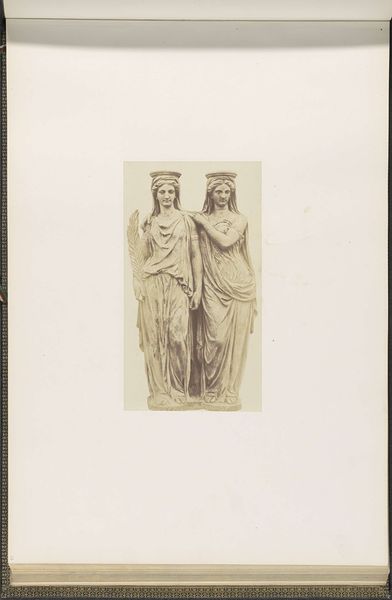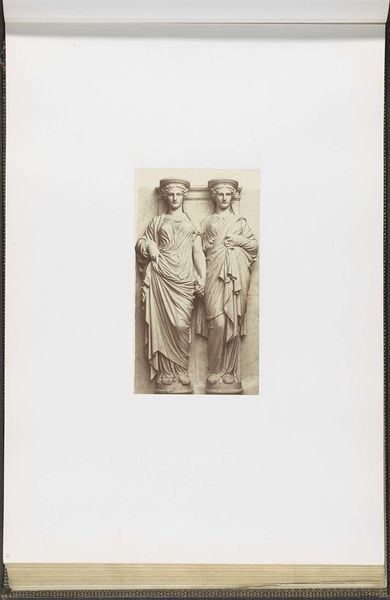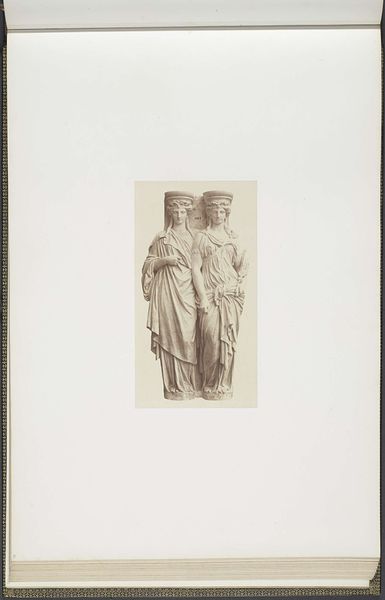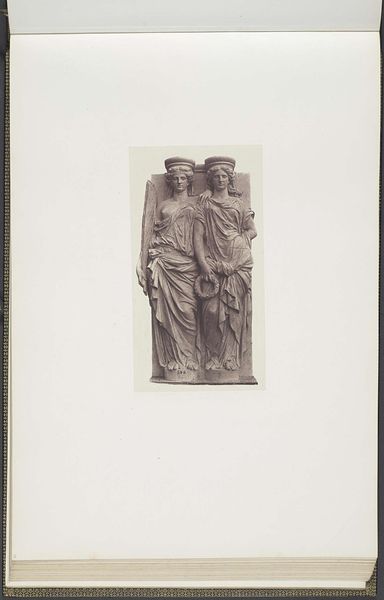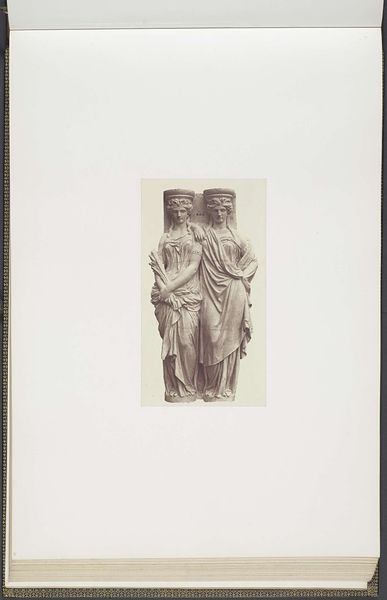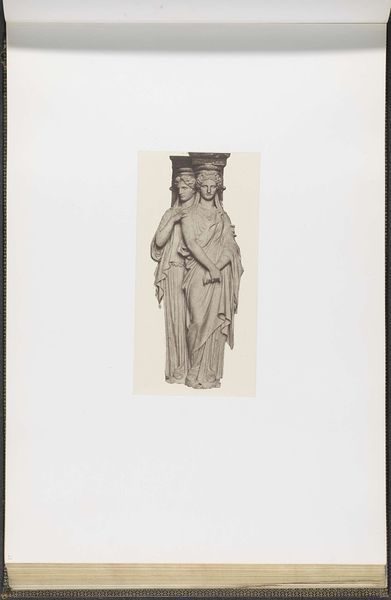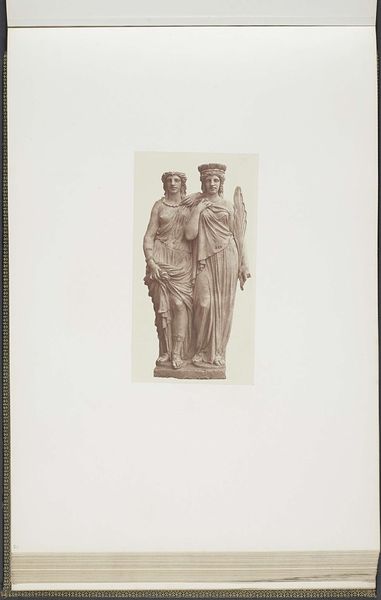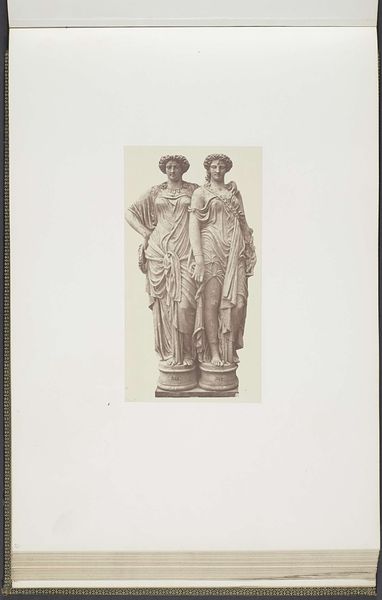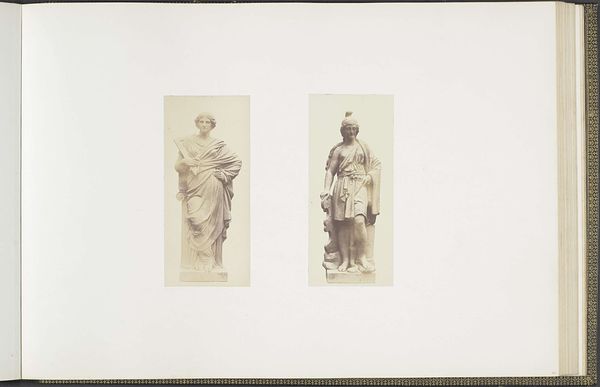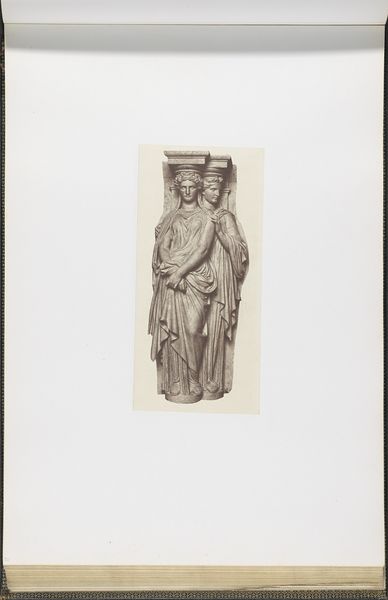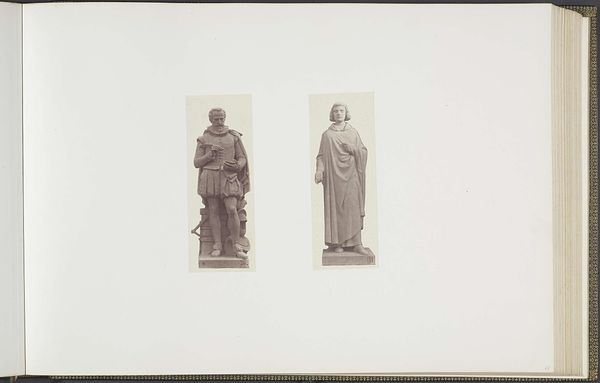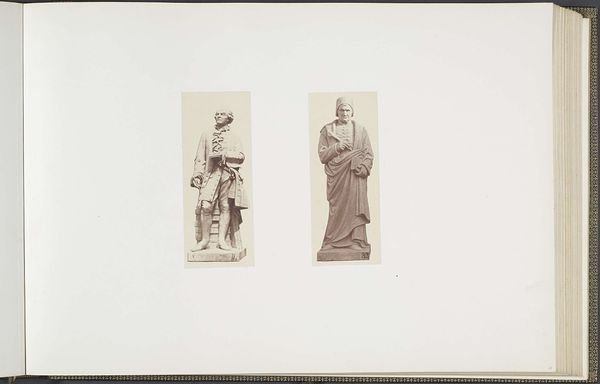
Gipsmodellen voor kariatiden op het Palais du Louvre door Astyanax Bosio c. 1855 - 1857
0:00
0:00
edouardbaldus
Rijksmuseum
print, photography, sculpture, gelatin-silver-print
#
portrait
# print
#
classical-realism
#
photography
#
sculpture
#
gelatin-silver-print
#
history-painting
#
academic-art
#
nude
Dimensions: height 376 mm, width 523 mm
Copyright: Rijks Museum: Open Domain
Edouard Baldus made this photograph of plaster models for caryatids on the Palais du Louvre sometime in the mid-19th century. This albumen print captures two draped female figures, likely rendered in plaster by Astyanax Bosio, who appears in the title. Plaster is a humble material, quick-setting and easily cast, but with a long association with the creation of sculpture. Traditionally, plaster models were made as prototypes for works to be executed in more precious and durable materials like marble or bronze. In this case, the plaster was destined to be translated into stone. But Baldus’s photograph gives the plaster a presence all its own. He coaxes a range of tonal values from the print, lending the caryatids a ghostly, ethereal quality. In their final form, they would be just a small part of the Louvre’s overall decorative scheme. But here, Baldus asks us to consider the artistry and skill involved in their creation, and the social implications of the hierarchies of art and craft.
Comments
No comments
Be the first to comment and join the conversation on the ultimate creative platform.
